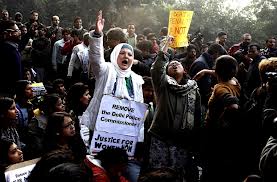
The carpenter, Ramadhar was lured into the same bus before the girl and her male friend boarded it in south Delhi.
Sources in the prosecution has said the JJB Board, presided over by Principal Magistrate Geetanjali Goel, has convicted the juvenile under section 395 (dacoity), 342 (wrongful confinement) and 412 (dishonestly receiving property stolen in the commission of a dacoity) of the IPC.
They said that the minor, however, was acquitted under section 365 (kidnapping or abducting with intent secretly and wrongfully to confine person and 394 (voluntarily causing hurt in committing robbery) of the IPC.
The Board will pronounce its sentence on July 25. On the same day it has also fixed for the final judgement in another case lodged for the gangrape of a woman physiotherapy intern in a moving bus here by six persons on the night of December 16, last year.
The murder charge was slapped after the victim died on December 29 in a Singapore hospital.Besides the juvenile, the four adult accused-- Mukesh, Pawan Gupta, Vinay Sharma and Akshay Thakur--are being tried by a special fast track court.
However, proceedings against fifth and key accused Ram Singh abated after his death on March 11 when he was found hanging in his cell in Tihar Jail here.The other four accused are also being tried for robbing carpenter Ramadhar on the fateful night.
During the inquiry, the juvenile had denied all charges, claiming he was not a participant in the horrendous crime.
The juvenile, an Uttar Pradesh native, had moved to Delhi when he was 11-year-old and had taken up menial jobs.





Comments
Add new comment